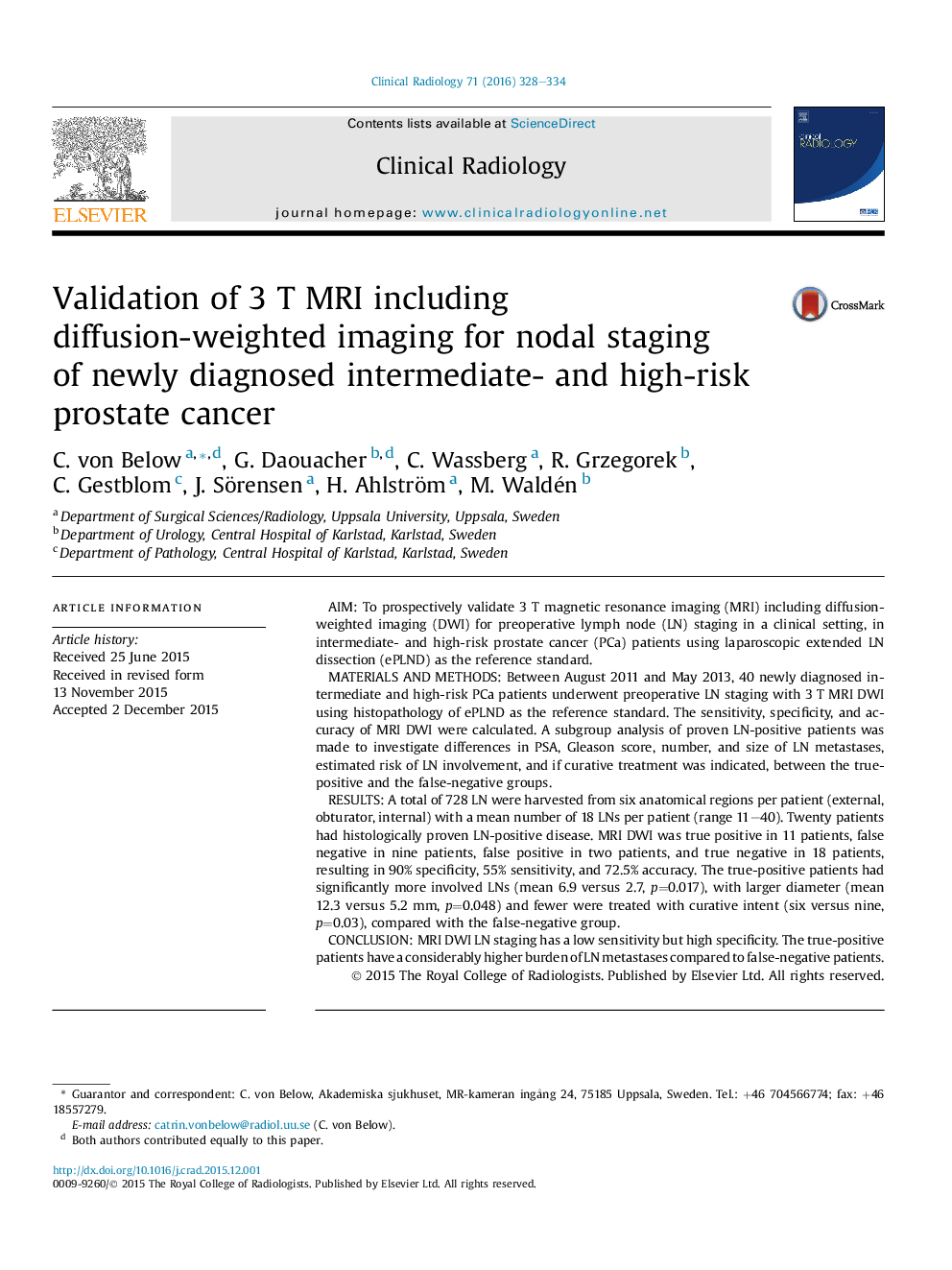| Article ID | Journal | Published Year | Pages | File Type |
|---|---|---|---|---|
| 3981396 | Clinical Radiology | 2016 | 7 Pages |
•Validation of 3 T MRI DWI for lymph node staging of mainly high risk prostate cancer.•Patients correctly diagnosed with metastasis had many and large involved nodes.•Imaging detected 55% of patients with lymph node metastases.•Among patients without lymph node metastases, 10% were misinterpreted as positive.
AimTo prospectively validate 3 T magnetic resonance imaging (MRI) including diffusion-weighted imaging (DWI) for preoperative lymph node (LN) staging in a clinical setting, in intermediate- and high-risk prostate cancer (PCa) patients using laparoscopic extended LN dissection (ePLND) as the reference standard.Materials and methodsBetween August 2011 and May 2013, 40 newly diagnosed intermediate and high-risk PCa patients underwent preoperative LN staging with 3 T MRI DWI using histopathology of ePLND as the reference standard. The sensitivity, specificity, and accuracy of MRI DWI were calculated. A subgroup analysis of proven LN-positive patients was made to investigate differences in PSA, Gleason score, number, and size of LN metastases, estimated risk of LN involvement, and if curative treatment was indicated, between the true-positive and the false-negative groups.ResultsA total of 728 LN were harvested from six anatomical regions per patient (external, obturator, internal) with a mean number of 18 LNs per patient (range 11–40). Twenty patients had histologically proven LN-positive disease. MRI DWI was true positive in 11 patients, false negative in nine patients, false positive in two patients, and true negative in 18 patients, resulting in 90% specificity, 55% sensitivity, and 72.5% accuracy. The true-positive patients had significantly more involved LNs (mean 6.9 versus 2.7, p=0.017), with larger diameter (mean 12.3 versus 5.2 mm, p=0.048) and fewer were treated with curative intent (six versus nine, p=0.03), compared with the false-negative group.ConclusionMRI DWI LN staging has a low sensitivity but high specificity. The true-positive patients have a considerably higher burden of LN metastases compared to false-negative patients.
